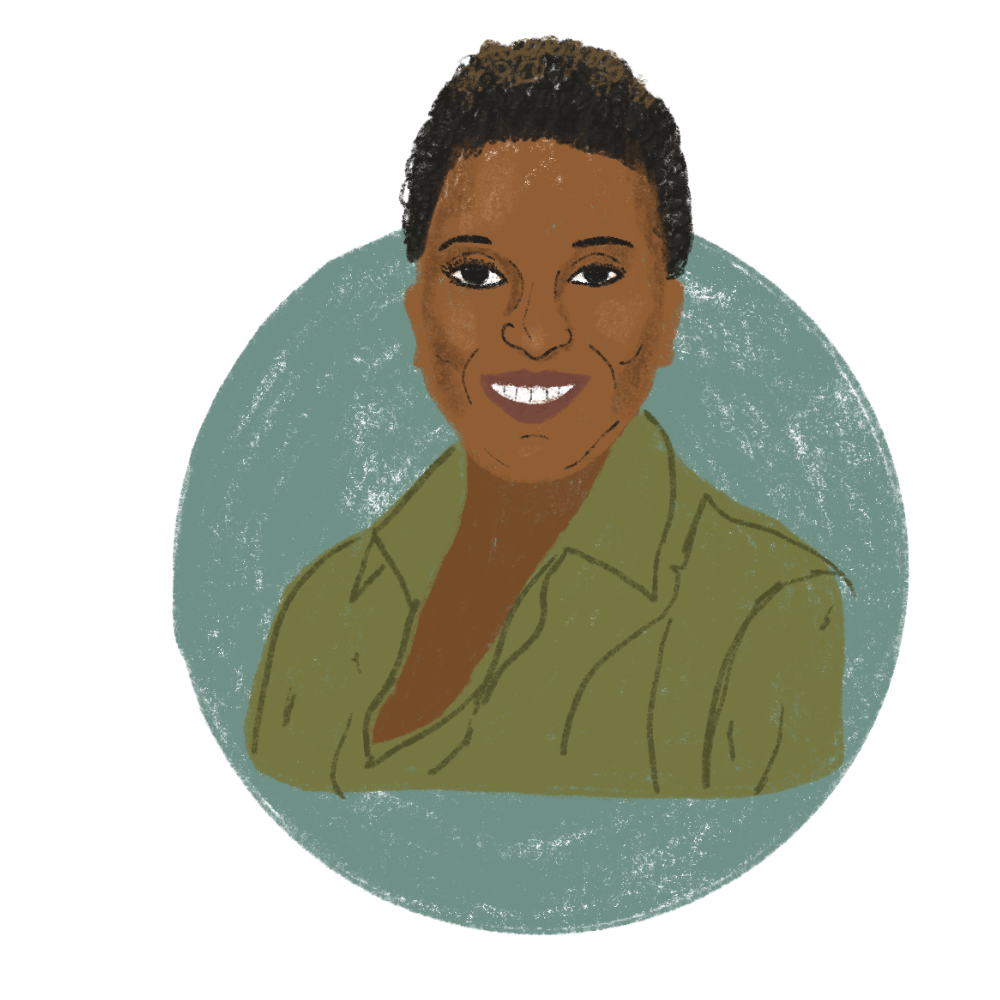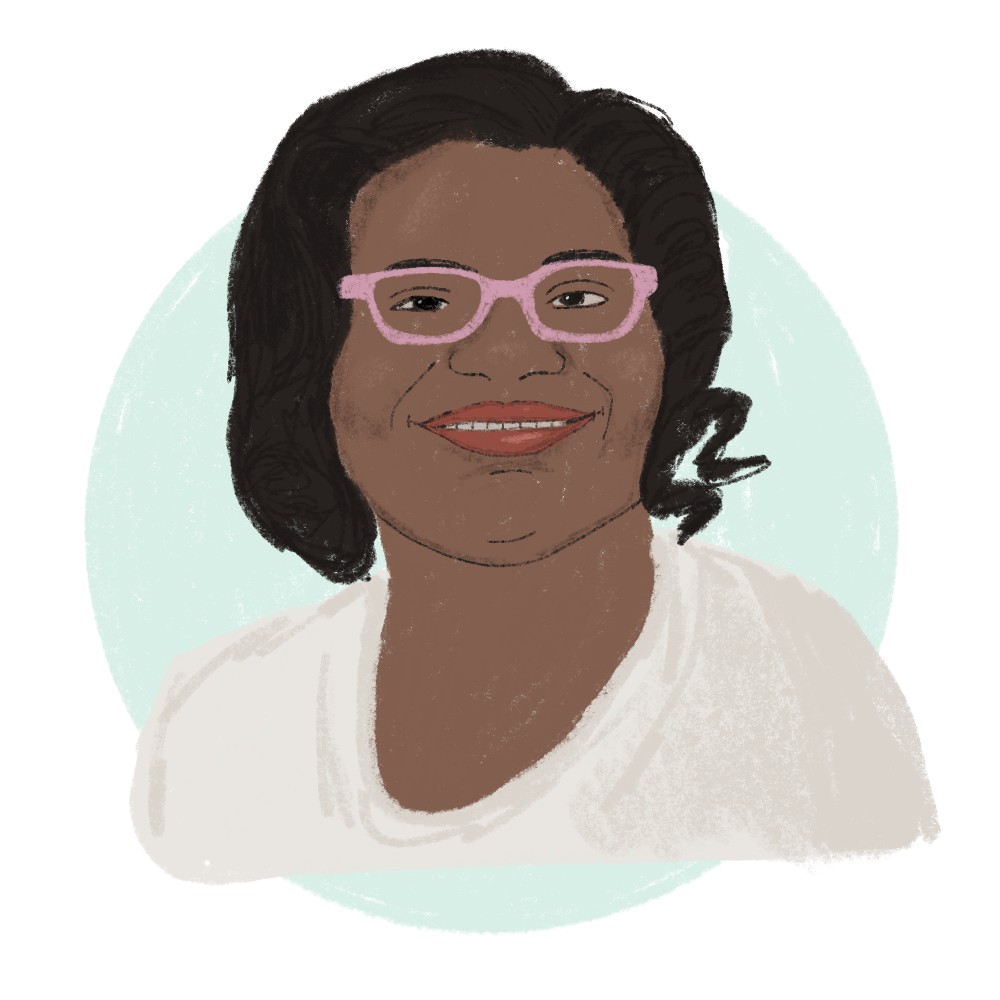Black candidates navigate a dual pandemic on the campaign trail
Written by Hunter Ellis
Shayna Griffin was barely three weeks into her new role as a member of the Kenosha Common Council when a police officer shot Jacob Blake seven times in the back. “Initially, it was kind of like being in shock, not knowing what to do,” Griffin says.
Black women in elected office and on the campaign trail in 2020 face what amounts to a dual pandemic — the ongoing COVID-19 crisis disproportionately hitting communities of color and the ongoing reckoning with racial injustice. For Griffin, Sen. Lena Taylor of Milwaukee, Rep. LaKeshia Myers of Milwaukee and Kimberly Smith of Oregon, the experience goes beyond the usual trauma and challenges of being a candidate or public official who is a woman — especially a Black woman — in Wisconsin. There was confusion and sorrow, along with new perspectives and experiences.
Sen. Lena Taylor (D-Milwaukee)
Taylor was in arguably the most important race of her life April 7, the spring primary in Wisconsin, but she was also in the midst of one of the most controversial and problematic voting situations in state history.
Like it did with everything else, the pandemic upended the normal routines of Election Day. Only five out of the usual 180 polling locations were open across the entire city. Something else was different about the primary: Taylor, 54, was running to become the first Black female mayor of Milwaukee.
“The Republicans making us go out to vote, well, it’s horrible. But what the Democrats in Milwaukee did was even more horrific, and I’m disgusted by it. And I’m even more disgusted by the fact that people were silent,” Taylor says.
The state’s Republican leaders decided to push through with an in-person election despite the rising number of coronavirus cases, but it was a local election commission in Milwaukee that limited the number of in-person voting sites to five, which the commission said was a decision based on a shortage of poll workers.

While Taylor lost her mayoral bid, she campaigned again in the fall, mostly virtually, to hold onto her Senate seat for four more years. And throughout the year Taylor fought hard to end voter suppression and create equity for Black people in Milwaukee and across Wisconsin.
“We have gone from being the place that Black people came to for a better way of life. And now we are literally the worst place in the nation to raise a Black child and to be a Black American,” Taylor says.
Even with some of the work being done in the state Legislature, like a task force on racial disparities, Taylor questions what potential outcomes and actions her colleagues might end up with.
Taylor continues to be optimistic for Milwaukee’s future and the state as a whole. Her experience this year taught her not to take time for granted and to be more conscious of just how short life is.
“You know, we’re winning. I like to say we’re winning because for the most part … we’ve not stopped what we’re doing, and I think that’s a good thing,” Taylor says.
Rep. Lakeshia Myers (D-Milwaukee)
In the midst of campaigning during a pandemic for re-election to the state Legislature, Myers, who is 36 and has a compromised immune system, had two tough tasks. She needed to keep herself safe and try to save the lives of her constituents in her northwest Milwaukee district, home to multiple skilled nursing facilities filled with residents extremely vulnerable to COVID-19. Myers and others in her community focused on how to take action themselves.
“We were in competition for protective equipment, company versus company or skilled nursing facility versus skilled nursing facility. And then the manufacturers drove up prices,” Myers says. “We didn’t have a good national response.”
This concern for health and safety in Myers’ district at the beginning of the coronavirus outbreak wasn’t the only thing adding to the chaos. Because of social distancing and the cancellation of many in-person events, many people in Myers’ district didn’t have access to the resources they normally would to learn more about voting and connect them with candidates.

Because of this, Myers made it a personal priority to get out and help those looking for assistance and make those who were voting a little more comfortable while doing so.
“I was passing out cheeseburgers to people in April to help them stay in line because the lines were so long,” Myers says. “[Voters] were wrapped around the high school that I went to.”
Even with all the negativity in 2020, Myers believes one positive outcome is the emerging power and energy of young people across the state who are registering to vote and standing up for their beliefs.
“I think there have been some blessings in disguise when it came from these dual pandemics,” Myers says. “I think the wool has been taken off of people’s eyes. They have been able to wake up and see what is happening.”
Kimberly Smith, Oregon Democratic candidate
In the middle of June, when almost everyone was still getting used to the drastic changes happening around the state and country, Smith announced her candidacy for the state Assembly. It was just two months before the primary election.
Smith challenged the 17-year Democratic incumbent, Sondy Pope. Being a fairly new candidate, Smith initially found it challenging to clear some of the early thresholds to start her campaign, such as raising money and collecting hundreds of signatures.
“It was very tiring. It was taxing. And it was probably more difficult than it has ever been for people who are new,” Smith says.

Even though Smith lost the primary election in early August, she pulled one-third of the votes despite a relatively short campaign. She doesn’t rule out running again in the future.
Although Smith wasn’t successful in the traditional sense, she came out of her experience with new perspectives.
“I learned a lot in this election, in this primary and in running for office. I believe that more people who are young need to run for office and have that experience, even if they lose,” Smith says. “More people need to be taught civics. More people need to be taught and go to the Capitol and lobby for their own cause and educate themselves.”
Smith hopes her run can inspire other Black candidates to run and win offices, especially in Dane County.
“How can I help bring other Black community members up and help them get elected? What’s my role?” Smith says. “It’s going to be taking action like that that’s going to produce the change that we need.”
Kenosha Alderwoman Shayna Griffin
Although Griffin, 31, has had little time on the Kenosha Common Council, she’s had plenty of experience. As a Black woman, Griffin felt the same shock and pain many in her community did after the shooting that caught national attention.
Griffin listened to members of her community and people of her district after the horrific event. She found that many in her community were looking for the same things she was: social justice and equity.
“As a community, we’ve had some great feedback, and there are so many great people in Kenosha who really want to see things get better, just like me,” Griffin says.

Events like Blake’s shooting are the reason Griffin sought a seat on the Kenosha City Council. As a practicing nurse working third shift since the pandemic started, Griffin’s care for others has always come first. She decided it was finally time to serve her community on a larger scale.
“I looked at it as, ‘Why not me?’ And just thinking about the future of this city being a mother, I wanted to see the 7th District improve and just wanted to be part of that change in a positive direction,” Griffin says.
After the events of this year, Griffin believes she is not the only one who notices the importance of being involved in the community and how the largest changes can happen at the smallest levels.
“People are really waking up, really wanting to know how everything works,” Griffin says. “There’s been so many positive organizations, people really stopping to think about where they are, where they want to be and how important it is for them to be involved and to fight for what they feel is right.”
